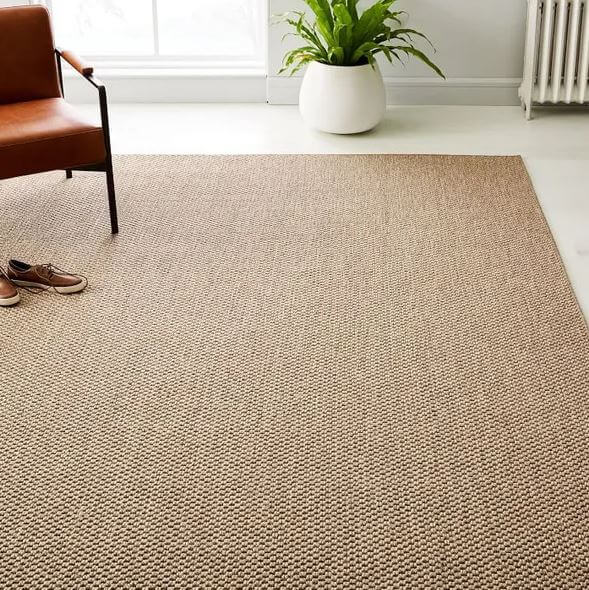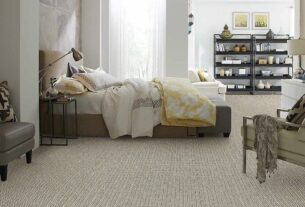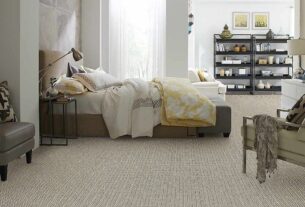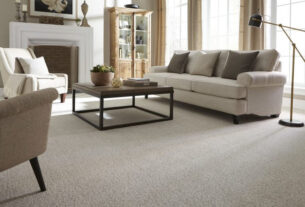As the world continues to prioritize sustainability, eco-friendly choices are becoming an integral part of interior design. Homeowners and businesses alike are increasingly leaning towards materials that contribute positively to the environment while enhancing the aesthetic value of their spaces. Among the many green options available, sisal carpets have risen in popularity as a stylish, durable, and sustainable flooring solution. Here’s why sisal carpets should be your go-to choice if you’re looking to marry eco-conscious living with beautiful interior design.
What is Sisal?
Sisal is a natural fiber derived from the Agave sisalana plant, which grows primarily in arid regions of the world, such as parts of Africa, Central America, and Mexico. The fibers of the sisal plant are extracted from its leaves and then processed into yarns for weaving into durable, textured carpets. For centuries, sisal has been valued for its tough, long-lasting qualities, making it a favored material for everything from ropes to floor coverings. Sisal carpets are now recognized for their sustainability, eco-friendliness, and ability to withstand wear, making them a great choice for any modern interior.
Why Sisal Carpets are Eco-Friendly
Sisal carpets have a reputation for being one of the most environmentally friendly flooring options available. Let’s break down why:
100% Natural and Biodegradable
One of the most significant benefits of sisal carpets is that they are completely natural and biodegradable. Unlike synthetic carpets made from petroleum-based products, sisal carpets don’t pollute the environment when they reach the end of their life. Sisal fibers break down naturally, leaving behind little to no trace of waste. This makes sisal a sustainable option for homeowners who want to reduce their carbon footprint and avoid contributing to landfill issues caused by non-biodegradable synthetic fibers.
Sustainably Sourced
The cultivation of sisal plants requires minimal water and pesticide use compared to other crops, making it an environmentally sustainable choice. Sisal grows in arid and semi-arid climates where water is scarce, and it thrives without the need for extensive irrigation or the use of harmful chemicals. Additionally, sisal is often grown on land that’s unsuitable for other forms of agriculture, meaning it doesn’t take away from food crop production or lead to deforestation.
Moreover, sisal farming is an essential industry for many rural communities, providing livelihoods for farmers and workers in these areas. By choosing sisal carpets, you’re supporting a sustainable agricultural practice that benefits both the planet and local economies.
Durable and Long-Lasting
Durability is another key reason why sisal carpets are considered eco-friendly. These carpets are exceptionally tough and can last for decades if properly maintained. This means that they don’t need to be replaced frequently, reducing the need for more resources to manufacture new carpets. Sisal’s durability ensures that your carpet will serve you for years to come, which is crucial in reducing waste and avoiding the cycle of buying and discarding carpets that is so prevalent with synthetic materials.
Low Maintenance
Sisal carpets require minimal maintenance, which reduces the amount of cleaning products and chemicals needed for upkeep. Many synthetic carpets need regular cleaning with harsh chemicals to maintain their appearance. In contrast, sisal carpets can be cleaned simply by vacuuming or using a gentle brush. This reduces the need for toxic cleaning agents, ensuring a healthier home environment and a cleaner planet. By minimizing the use of chemical cleaners, sisal carpets contribute to a healthier living space while preserving natural resources.
Non-Toxic and Safe for Indoor Air Quality
Sisal carpets don’t emit harmful fumes or volatile organic compounds (VOCs) like synthetic carpets, which can contribute to indoor air pollution. VOCs, commonly found in synthetic carpet fibers, have been linked to a range of health issues, including respiratory problems and headaches. Sisal carpets, on the other hand, are non-toxic and safe for indoor air quality, making them an excellent choice for families, especially those with young children, pets, or allergies. By opting for sisal, you’re ensuring a healthier indoor environment.
Sisal Carpets in Interior Design: A Stylish Addition
Beyond their eco-friendly attributes, sisal carpets offer a timeless and stylish appeal that complements a wide range of interior design aesthetics. Their natural texture, earthy tones, and organic look make them an ideal choice for homeowners looking to incorporate sustainable materials into their decor. Whether you are working with a minimalist, modern space or a more rustic, organic interior, sisal carpets can effortlessly fit in.
Modern and Minimalist Interiors
In contemporary homes, the neutral colors of sisal – ranging from soft beiges to light browns – provide the perfect foundation for a minimalist design. The simplicity and understated elegance of sisal add warmth without overwhelming the room, allowing other design elements to shine. Whether paired with clean-lined furniture, sleek accessories, or large windows that invite natural light, sisal carpets help create a serene, tranquil atmosphere.
Rustic and Eco-Chic Settings
For rustic or eco-conscious interiors, sisal carpets add an authentic, earthy touch that enhances the natural beauty of the space. The textured weave of sisal complements wooden furniture, stone accents, and plants, creating a harmonious, balanced environment. Sisal is especially suitable for beach homes, cottages, or cabins, as it gives the room a warm, inviting vibe reminiscent of nature.
Durability for High-Traffic Areas
Sisal carpets are ideal for high-traffic areas such as entryways, hallways, living rooms, and offices. Their natural resilience ensures that they can handle the wear and tear of busy spaces without losing their texture or beauty. Additionally, sisal carpets resist stains and dirt, making them easier to maintain in frequently used areas of the home.
Caring for Your Sisal Carpet
To keep your sisal carpet looking fresh and durable for years, a few simple care steps are necessary:
- Vacuum regularly: Use a vacuum cleaner with a soft brush attachment to remove dirt and dust from the surface of the carpet. Regular vacuuming helps prevent debris from settling into the fibers.
- Avoid excessive moisture: Sisal is sensitive to moisture and can become damaged if exposed to water. Clean spills immediately with a dry cloth and avoid steam cleaning or wet mopping.
- Use a rug pad: To prevent slipping and to prolong the life of your sisal carpet, place it over a rug pad. This adds extra cushioning and reduces wear.
- Rotate periodically: In high-traffic areas, rotate the carpet regularly to ensure even wear across the surface.
Conclusion: Why Choose Sisal Carpets?
Sisal carpets offer a unique combination of sustainability, durability, and aesthetic appeal that make them an excellent choice for any eco-conscious homeowner or business. Their natural, biodegradable properties, low maintenance needs, and non-toxic nature make them an environmentally responsible choice, while their texture and design possibilities ensure that they complement a variety of interior styles. By choosing Sisal Carpets, you’re not only adding a beautiful, durable flooring option to your space – you’re also making a positive contribution to the environment.





